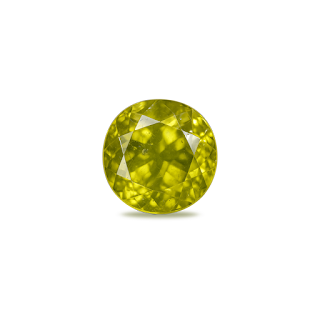When it comes to gemstones, few captivate the imagination quite like orthoclase. With its soft, ethereal glow and rich geological history, this potassium-rich feldspar mineral is a hidden treasure in the world of crystals. Whether you’re a gem enthusiast, a jewelry designer, or someone drawn to metaphysical healing, orthoclase offers a blend of scientific intrigue and mystical allure. In this deep dive, we’ll explore everything from its geological roots to its modern-day applications, ensuring you walk away with a newfound appreciation for this underrated gem.
What is Orthoclase?
Orthoclase is a member of the feldspar family, a group of minerals that make up nearly 60% of the Earth’s crust. Its name derives from the Greek words orthos (straight) and klasis (fracture), referencing its signature 90-degree cleavage planes. Chemically, it’s a potassium aluminum silicate (KAlSi₃O₈) and forms in prismatic crystals within igneous rocks like granite and syenite.
While often overshadowed by its feldspar cousins like labradorite or amazonite, orthoclase holds its own with subtle elegance. It’s most recognized in its gem-quality form, which ranges from transparent to translucent and appears in hues like pale yellow, peach, pink, and green. One of its most celebrated varieties is moonstone, a gem admired for its adularescence—a shimmering optical effect resembling moonlight.
Physical and Optical Properties
1. Color & Clarity: Orthoclase is typically colorless or white but gains delicate tints from trace elements. Iron impurities, for instance, may impart golden or yellowish tones, while manganese can create soft pinks. High-quality specimens are eye-clean, though some may contain natural inclusions like veils or needle-like rutile.
2. Hardness & Durability: With a Mohs hardness of 6 to 6.5, orthoclase is softer than quartz, making it prone to scratches. Its perfect cleavage in two directions also demands careful handling during cutting. Despite this, well-cut orthoclase gems are durable enough for jewelry when set in protective settings.
3. Luster & Phenomena: Orthoclase exhibits a vitreous (glass-like) luster. Moonstone, its star variety, displays adularescence-a billowy glow caused by light scattering between microscopic layers of feldspar. This effect is strongest in cabochon-cut stones and is highly prized in gemology.
Historical Significance and Lore
Orthoclase has quietly shaped human history. Ancient civilizations valued feldspar minerals for their role in crafting ceramics and glass, though orthoclase itself was rarely used decoratively until the 18th century. Its moonstone variety, however, has been revered for millennia.
1. Roman Mythology: Romans associated moonstone with lunar deities, believing it captured the moon’s radiance.
2. Asian Cultures: In India, moonstone symbolized divine femininity and was often set in ceremonial jewelry.
3. Art Nouveau Era: European designers of the late 1800s adored moonstone for its dreamy aesthetic, pairing it with flowing, nature-inspired motifs.
Where is Orthoclase Found?
Orthoclase deposits span the globe, with key sources in:
- Madagascar: A leading source of gem-quality orthoclase, particularly moonstone.
- Sri Lanka: Renowned for blue-sheen moonstones.
- Myanmar (Burma): Produces rare, high-clarity specimens.
- USA: North Carolina and New Mexico yield orthoclase in granite pegmatites.
- India and Brazil: Known for commercial-grade material used in carvings and beads.
Mining orthoclase often involves extracting it from host rocks like granite. Artisanal miners in Madagascar and Sri Lanka hand-select crystals, ensuring minimal damage to these delicate gems.
Metaphysical Properties: A Stone of Creativity and Balance
In metaphysical circles, orthoclase is celebrated as a stone of harmony and intuition. Key attributes include:
- Emotional Healing: Believed to soothe anxiety, foster self-acceptance, and release past traumas.
- Creativity Boost: Artists and writers use it to overcome creative blocks and channel inspiration.
- Spiritual Alignment: Linked to the crown chakra, it’s said to enhance meditation and psychic awareness.
- Relationship Harmony: Some wear it to improve communication and resolve conflicts.
Moonstone, in particular, is tied to feminine energy and cycles, making it a popular talisman for fertility and new beginnings.
Orthoclase in Jewelry: Elegance Meets Caution
While orthoclase isn’t as mainstream as diamonds or sapphires, its understated beauty has a niche following. Designers often use it in:
- Pendants and Earrings: Protective settings like bezels minimize wear.
- Statement Rings: Reserved for occasional wear due to its softness.
- Carved Pieces: Its uniform texture makes it ideal for cameos and beads.
Care Tips:
- Clean with mild soap and lukewarm water.
- Avoid ultrasonic cleaners, steam, and harsh chemicals.
- Store separately to prevent scratches.
Orthoclase vs. Other Feldspars: What Sets It Apart?
Feldspars are divided into two subgroups: plagioclase (sodium/calcium) and alkali (potassium). Orthoclase belongs to the latter, alongside microcline and sanidine. Here’s how it compares:
Microcline (Amazonite): Shares orthoclase’s composition but forms in triclinic crystals. Amazonite’s vibrant teal color contrasts with orthoclase’s softer palette.
Plagioclase (Labradorite): Known for iridescent labradorescence, unlike orthoclase’s adularescence.
Sanidine: A high-temperature feldspar with less distinct cleavage, often found in volcanic rocks.
Buying Guide: How to Choose Quality Orthoclase
When shopping for orthoclase, consider:
Color: Saturation matters. Peach and yellow tones are common, while rarer greens command higher prices.
Clarity: Seek stones with minimal inclusions, especially in transparent cuts.
Cut: Cabochons highlight adularescence; faceted cuts maximize brilliance.
Size: Orthoclase is affordable even in larger sizes (e.g., 5–10 carats).
Price Range: Moonstone retails for
10
–
10–100 per carat, while transparent orthoclase averages
20
–
20–50 per carat.
Conclusion: The Quiet Allure of Orthoclase
Orthoclase may not dominate headlines like rubies or emeralds, but its quiet charm and geological significance make it a gem worth discovering. From its role in Earth’s crust to its metaphysical whispers of creativity and balance, this mineral bridges science and spirit. Whether adorning a pendant or resting on an altar, orthoclase invites us to embrace both the tangible and the transcendent.















0 Comments